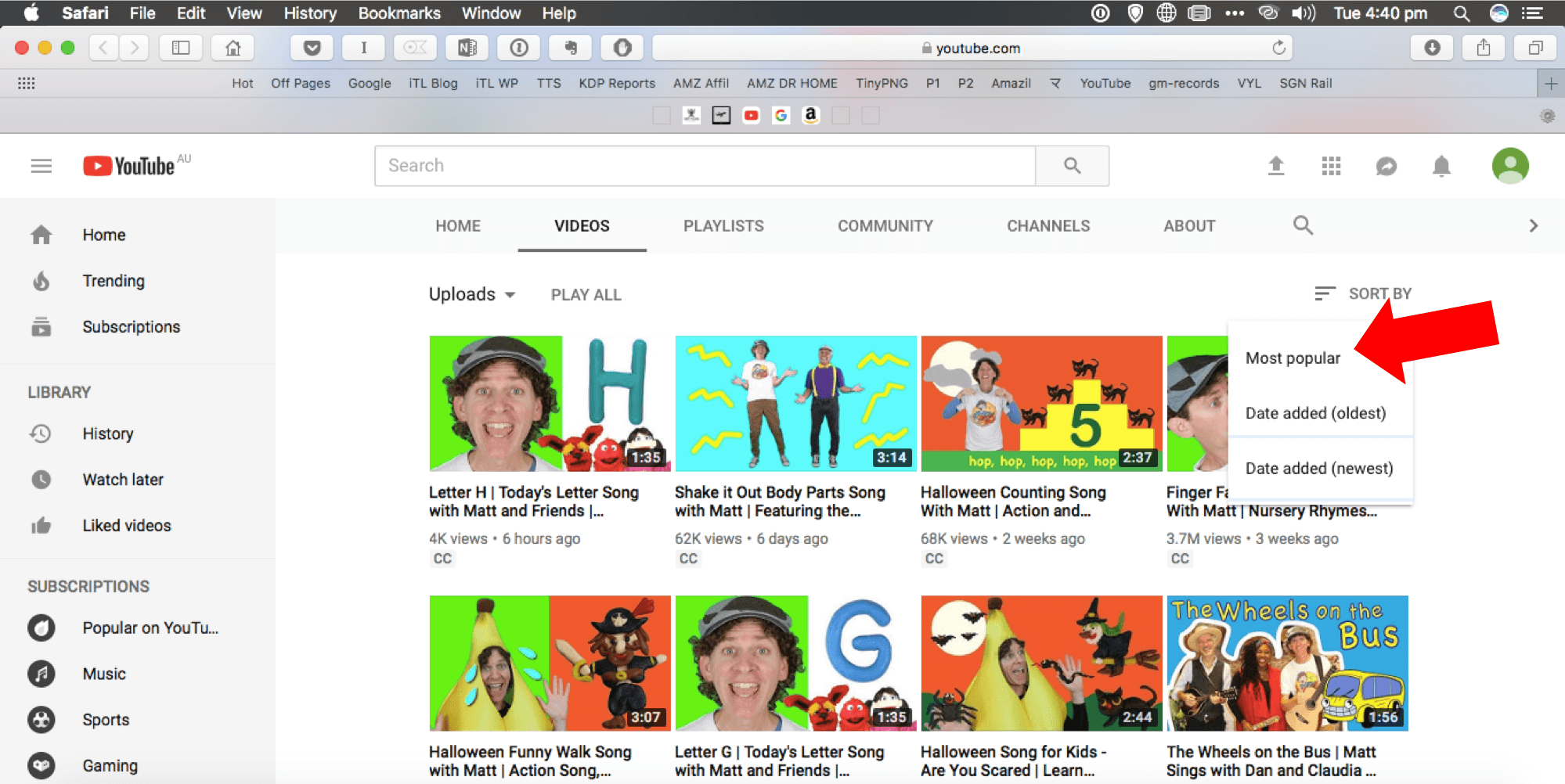
Developing a collection of high quality songs to play in your Kindergarten English classes takes time and work. Here’s a few ways to speed up the process.
Ask fellow teachers
An obvious one, ask your fellow teachers what songs they use. Enough said.
Ask your teaching assistant
If you have teaching assistants (TAs), ask them for advice as to which songs work best with the children for the use you intend. Teaching assistants get to see a lot of different classes (and teachers), and they’ll have some worthwhile information to share with you.
Tailor your searches on YouTube
YouTube is a great source of good (and not so good) music. By sorting your search results by view count, you can get an idea of what is popular. Be aware though that some YouTube channels fake their view counts by using bots and other methods.
Search your favourite YouTube channels
I like to periodically search my favourite YouTube music channels for kids. Again, I sort, filter, and refine my search results. For example, I sort by view count to see which songs are most popular. Also, I’ll sort the search results by ‘date released’ to check out the newest songs they’ve produced for the channel.
Read books on teaching
Many books on teaching Kindergarten or preschool English have a list of songs that you will be able to successfully draw from for your classes. See my article on books about teaching English to very young learners for some good references.
Search online
This one is my power tip. Another great way to find music for your very young learners is a general web search. Often, you’ll find that someone has created a list of songs for a specific topic like colours, shapes, phonics, body parts, and so on. More often than not, I’ll find a few songs in there that I didn’t know of, and one or two completely hidden gems that I would not have found by searching YouTube.
Create Playlists
I like to organise my songs into a playlist on YouTube. I chunk related songs together, with the most frequently played sitting at the top of the list. For my main playlist, that order is roughly: the hello song, goodbye song, clean up song, music for activities, background music for crafting, themes like colours and numbers, and so on. I have a separate list for phonics and others for special purposes, like when I teach at public kindergartens. It helps make songs easy to find, and also reduces wasted downtime (where the kids will want to start chatting or will otherwise be distracted) while I’m searching for a song on YouTube.

